Pierce Brosnan’s Wife Stuns People With Her Transformation During Her Latest Appearance

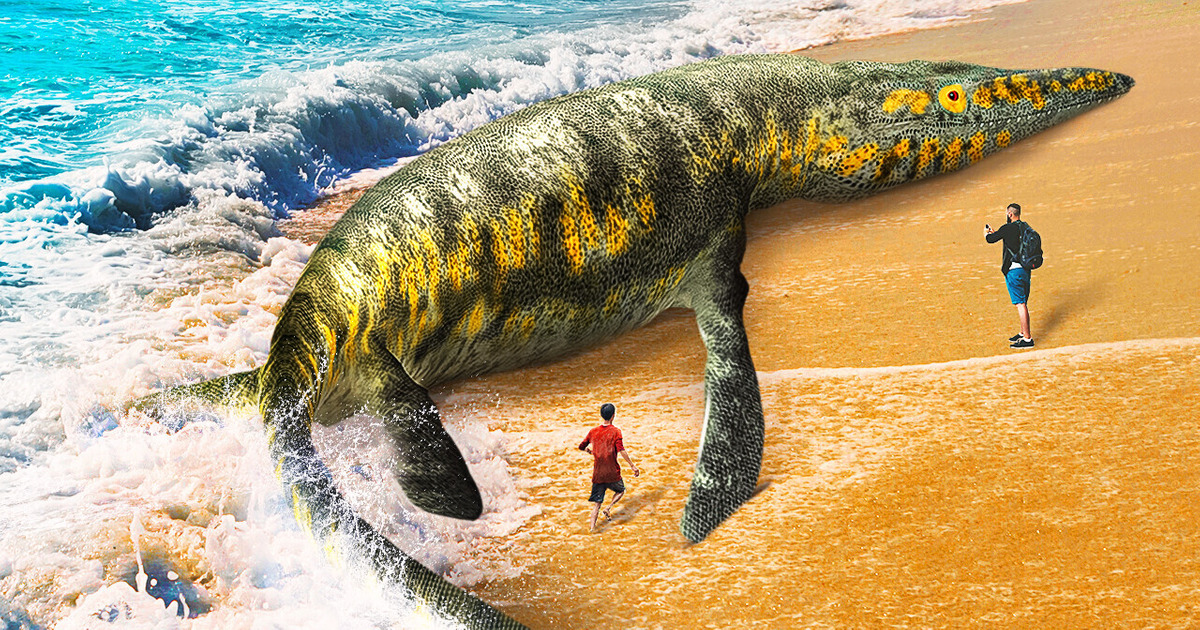
Think you know what lurks in the depths of the ocean? While nearly 95% of our oceans haven’t been explored yet, it’s hard not to let your imagination run wild. But thanks to brave explorers, deep-sea cameras, and awesome archaeologists, we do know about some pretty incredible sea creatures living in our waters today...and millions of years ago.
From the 9-ft [2.7 m] spider crab to the 60-ft [18 m] prehistoric Megalodon, these sea dwellers come in all shapes and sizes! But let’s focus on sea creatures famous for their huge size.
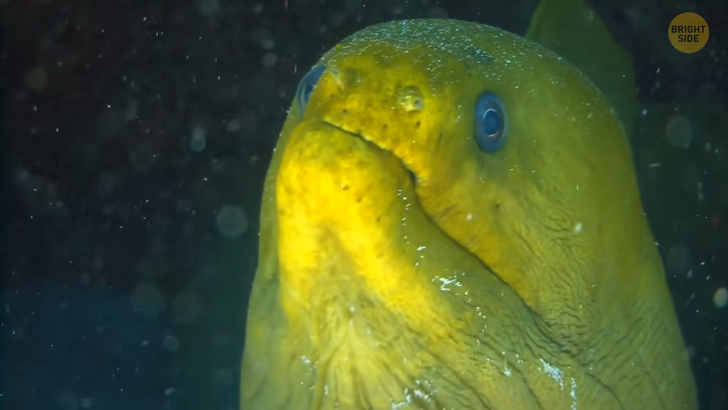
Can you guess which living species of whale is the largest? Well, it’s not the orca, but that’s a good guess. The orca is a toothed whale that can grow to anywhere from 23 ft to 32 ft [7 m to 9.8 m], which is slightly smaller than a school bus. How about the narwhal? Nope, they’re not the biggest either! These “unicorns of the sea” live mainly in arctic waters and only grow 13 ft to 20 ft [4 m to 6 m] in length — and that’s including their 9 ft [2.7 m] tusk.
Tired of guessing? OK, I give in! The largest whale that still exists today is the blue whale. At a jaw-dropping 82 ft to 105 ft [25 m to 32 m], the blue whale is not only the biggest whale we know of but is currently the largest animal to have ever lived on Earth. Seriously! These animals are bigger than a T-Rex and even the prehistoric Megalodon!
If you were to put a blue whale next to a school bus, it would look like it could swallow it. Think about that! According to National Geographic, a blue whale’s tongue can weigh the same as an elephant, and their hearts can weigh as much as a car. That doesn’t even sound possible! It’s no wonder these giants need to eat about 4 tons of krill every day!
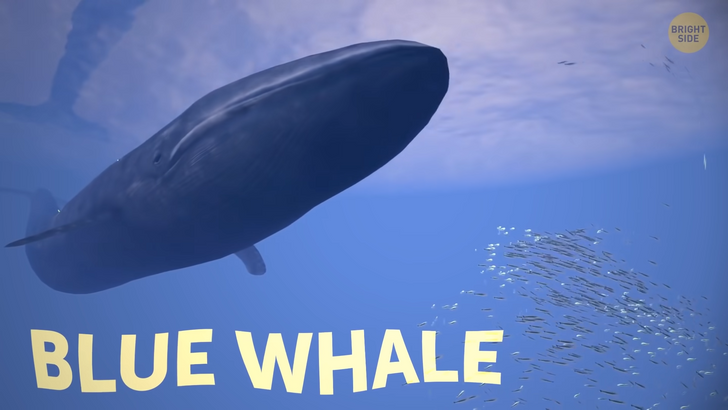
While there aren’t too many animals living today that can compete with the blue whale’s epic proportions, there is an entirely different species that is a good contender, and it’s not quite what you would expect: it’s a jellyfish! No, I’m not talking about the little jellyfish that wash up on the shore and ruin a perfectly good day at the beach. I’m referring to the lion’s mane jellyfish, the biggest jellyfish around!
This invertebrate can grow up to 120 ft long [36.6 m]!! They also come in different gorgeous colors like red, purple, or even shades of orange. And as if their length wasn’t impressive, the lion’s mane jellyfish boast a whopping 8 sets of 70 to 150 tentacles...that means they can have up to 1,200 in total! And here’s the Giant Oceanic Manta Ray — the largest type of ray in the world.
Their “wingspan” can be longer than a bus! These guys can reach 30 ft [9,1 m] in length. They also have the biggest brain compared to body size among all fish. Unlike their stingray cousins, mantas don’t have venomous tails. And while the lion’s mane jellyfish and the blue whale are yet to be beaten for the longest sea creature, there is one marine creature that can grow even larger in length. The Portuguese Physalia Physalis, tentacles and all, can reach a length of 165 ft long [50 m], and that’s according to mentalfloss.com!
While this thing may look a lot like a jellyfish, it’s actually known as a siphonophore, and there are hundreds and sometimes thousands of them that are genetically identical. Their long tentacles help the organism catch prey, and its sting is fatal to most animals — even humans in some cases. What’s even creepier is that if one of the tentacles comes off the organism for whatever reason, it can float around the water for days before decomposing.
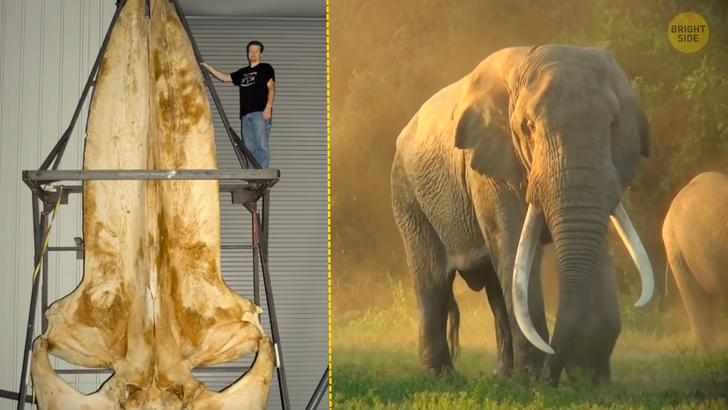
Even if it’s detached, this tentacle can still sting you! But don’t go running out of the ocean just yet. Your chances of being hurt by a Portuguese Physalia Physalis sting are pretty slim. However, if you do get stung, the side effects aren’t pretty, with welts, stomach cramps, an elevated heart rate, and an upset stomach. While you don’t want to go anywhere near these long creatures, they sure are pretty to look at. Check out all those colors!
The Shastasaurus is the biggest marine reptile that has ever existed. These predators lived during the Late Triassic Period about 210 million years ago. These amazing giants could reach lengths of up to 69 ft [21 m] and weighed more than 75 tons. This made the Shastasaurus as heavy as a blue whale. And if you could stand this creature up vertically, it’d be as tall as a 7-story building! Despite appearances, the Shastasaurus was actually pretty slim for its size; its ribcage was only 6 ft [2 m] across.
You’d think that this big guy was chowing down on other dinosaurs, but that’s not the case at all! This reptile survived on a diet that consisted of small fish and cephalopods, like octopuses and squids. The Albertonectes is a bright representative of the Plesiosaur family, meaning that this marine reptile had a small head on an incredibly long neck and large flipper-like limbs that helped it move through the water. These creatures occupied the seas around North America 76 to 70 million years ago.
The length of this “sea monster” could reach 38 ft [11.5 m], with its neck taking up 23 feet [7 m] of that length. Its neck was a true record-breaker; it had a whopping 76 bones in it! No other animal known to humankind has had so many vertebrae in its neck. Scientists aren’t sure why they needed such a lengthy neck. They might have used it to collect shellfish off the seabed, or perhaps it helped them capture their main prey, fish and squids. This aquatic reptile also had gastroliths in its stomachs; some of them were as big as 5.5 inches [14 cm] in diameter!
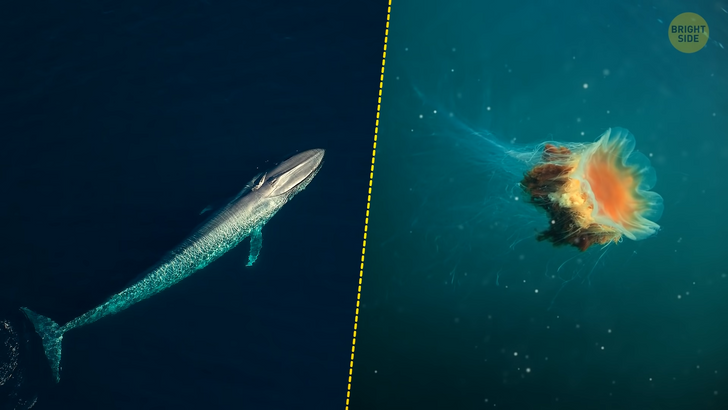
The Tylosaurus belonged to the Mosasaur family. It dominated the shallow seas of North America about 85 to 80 million years ago. This was an enormous predator, with the biggest representatives reaching 45 ft [13 m] in length. It had a narrow hydrodynamic body with a blunt powerful head that the animal used to ram and stun its prey. Its body was equipped with agile flippers and a long tail decorated with a maneuverable fin. The Tylosaurus was a carnivore, and its diet included not only fish, turtles, and small sharks but also other mosasaurs, plesiosaurs, and flightless birds!
Meet Ophthalmosaurus! This prehistoric reptile thrived during the late Jurassic period and lived in oceans all over the world. Ophthalmosaurus weighed somewhere around 6,000 lb [2,722 kg] and grew to approximately 16 ft long [4.9 m], according to newdinosaurs.com — that’s about the same length as the beluga whale that exists today.
It’s too bad these guys went extinct before we had a chance to see them ourselves as their cartoonish wide eyes and dolphin-like features are pretty darn cute. Of course the Ophthalmosaurus evolved over time to become Ophthalmologists — or eye doctors that we know today. No, that’s a lie. Just testing you.
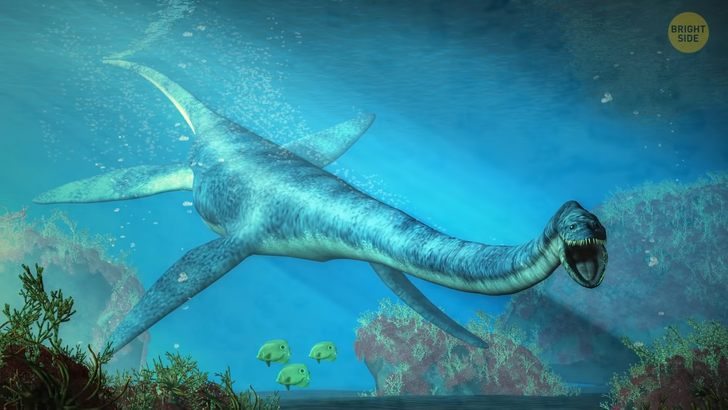
The Mosasaurus is a truly gigantic predator that dominated the seas all over the world about 66 million years ago. According to fossil evidence, some specimens could be more than 50 feet [15 m] in length. This fact makes the Mosasaurus the biggest marine carnivore of its time.
One of the most terrifying things about this creature was its crocodile-like head, decorated with literally hundreds of razor-sharp teeth neatly organized in two rows on both jaws. The thing is that it was pretty challenging for the Mosasaurus to grab its prey in the water. That’s why it had all these teeth, plus something special: pterygoid teeth anchored to the bones on the roof of its mouth! This made hunting and holding onto its prey much easier.
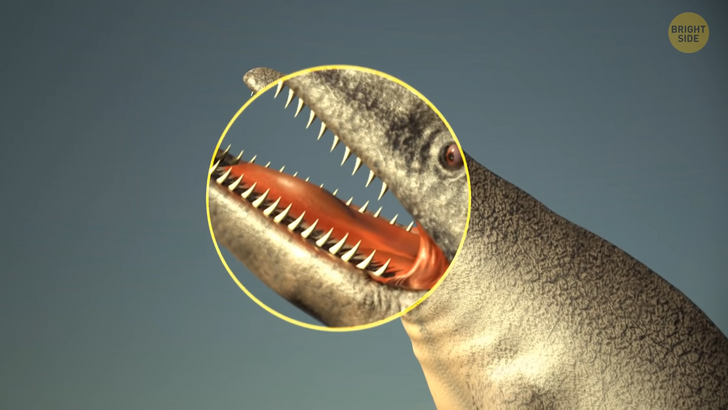
The Styxosaurus belonged to the Plesiosaur family and lived during the Late Cretaceous Period, around 85 to 70 million years ago. Upon first glance at this dinosaur, you might mistake it for a sea snake, and it’d be an honest mistake! Styxosauruses were about 35 ft [10.6 m] in length, but over 16 feet of that consisted just of their long snake-like neck! They had a comparatively small body and weighed approximately 4 tons.
Their mouths were full of razor-sharp cone-shaped teeth that they used to catch fish. They didn’t need to chew their prey thanks to the 200 small stones called gastroliths in their bellies that probably aided in digestion. At the same time, some scientists believe that the Styxosaurus used these stones to sink to the ocean bottom in search of particular types of fish. Hmm, looks kinda like Nessie to me...











